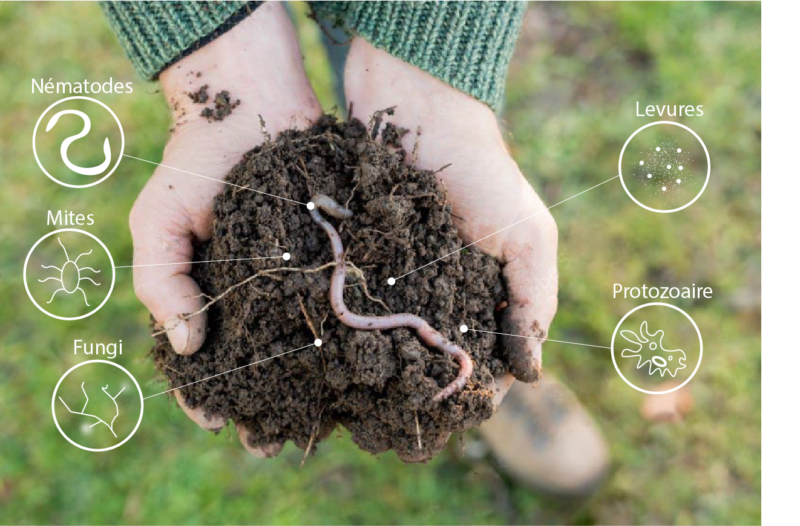Life on Earth is based on carbon. Carbon is also found in our atmosphere in the form of carbon dioxide (CO2). Carbon helps regulate the Earth’s temperature, makes all life possible, is a key ingredient in the food we eat, and provides us with fossil fuels. Since our planet and its atmosphere form a closed environment, the amount of carbon in this system doesn’t change. Where the carbon is located — in the atmosphere or on the Earth — is constantly in flux. On Earth, carbon is stored in the soil, sediments, rocks, the oceans, and living organisms. These are the reservoirs through which carbon cycles.
Carbon is released into the atmosphere when, for example volcanoes erupt, fires blaze, organisms die, or fossil fuels are burned. When soil is damaged, it also releases CO2 into the atmosphere. The cumulative effect has created havoc with our climate. Too much carbon in the atmosphere is causing the earth to overheat. With the warmer climate rainfalls will become more violent and less frequent We can expect longer dry spells and higher risks of flooding.
We rely on healthy soil for 95% of what we eat, yet we take it for granted. Thousands of years of ploughing, deforestation, and erosion have left our soils in dire shape. In fact, many of the world’s cultivated soils have lost more than 50% of their original carbon stocks, essential for plant life. There’s simply not enough carbon in our soils today.
In just one handful of healthy soil there are more microorganisms than there are humans on Earth. We are only beginning to understand this complex network of beings beneath us.

What we do know is that plants capture carbon dioxide in their leaves through photosynthesis and pump the carbon down through their roots to feed hungry microorganisms living in the soil. In turn these organisms provide the plants with increased access to soil nutrients and water. Carbon-rich soils are more fertile, making land more productive. They also act like giant sponges, absorbing water during floods and providing it to plants in times of drought. Healthy soil is a major reservoir for carbon.
The good news is that we now know how to put carbon back in the soil where it belongs. Practices such as keeping soil covered with plants, increasing crop diversity, composting, and carefully planned grazing are proven ways to put carbon back into the soil. Thus, what is today a problem, atmospheric carbon, can become a solution, soil carbon.
The French government has recognized this and in 2015 launched “4 pour 1000”, calling on all countries to increase soil carbon by 0.4% each year (read more). If every nation were to reach this ambitious, but achievable goal, we could store up to 75% of global annual greenhouse emissions—enough to make a real difference to our planet’s future well-being.
Of course, we still need to reduce our fossil fuel emissions. But for farmers, emerging science proves that shifting to regenerative forms of agriculture such as agroecology, agroforestry, and holistic grazing will allow us to remove excess carbon from the atmosphere and store it the ground, where it belongs.
Hope lies right beneath our feet, but the transition to this kind of agriculture is not easy. It takes lots of trials and errors to figure out the right approach for each crop, soil type and/or microclimate. The best way to encourage farmers to adopt these virtuous practices is to support them by buying their products even if they’re a bit more expensive. Not only will you get healthier products but you’ll support what is probably the most promising solution to climate change.
To enter our website, you must be of legal drinking age in your country.